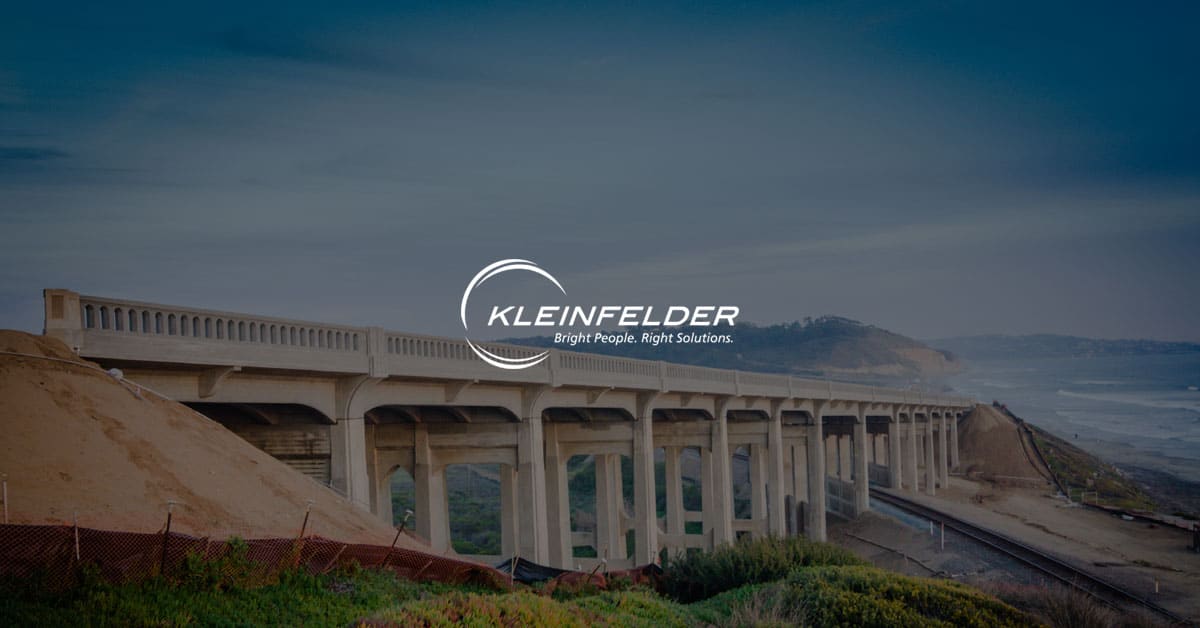
Rita Fordiani Discusses Trends and Issues in Water for World Water Day

Rita Fordiani
From conveyance river crossings in New England to dam safety inspections and emergency services in California, and many other projects in between, Kleinfelder’s water group is made up of civil engineers, resiliency planners, and water, wastewater, and stormwater practitioners from offices spanning the United States.
And helping to lead our $70 million water market business is Kleinfelder Senior Vice President and Water National Market Manager, Rita Fordiani, PE.
“As a young child I was always very interested in improving our environment and water quality,” Rita says, noting her early jobs included a college internship with the Weston, Massachusetts Town Engineer, working on groundwater quality and stormwater management challenges to planning, designing, securing funding, and managing the construction of 10 potable water systems for the Peace Corps in Ecuador.
Now, with 36 years of experience working with municipal, industrial, and federal clients – including several years spent working internationally in Canada, South America, and Europe – and degrees from Tufts and MIT, Rita not only knows water, but she is passionate about solving the increasingly complex issues our clients face when it comes to infrastructure.
“Our water resources are precious,” she says. “Proper water, wastewater, flood, stormwater, and environmental management are critical to our public health and livelihood.”
So, in honor of World Water Day, what does Rita see as some of the upcoming trends and issues in this industry?
“It’s no question that climate change is a huge issue for our clients,” says Rita. “As is emerging contaminants in groundwater and aging infrastructure. Kleinfelder is working to solve a myriad of issues holistically, combining programmatic, innovative tools and quality service.”
CLIMATE CHANGE
Rita sits in our Boston office, where our resume of climate change work is “excellent.” That’s in part because Boston was ranked the world’s eighth most vulnerable to floods, according to a recent Washington Post article – in which Kleinfelder Climate Change Team Senior Planner, Nasser Brahim, is featured.
“It’s more than just buried infrastructure,” Rita says. “It’s also about looking at impacts above the ground, not just below the ground.”
For example, Rita serves as Client Account Manager for the Boston Water and Sewer Commission. One such project for this client included developing an application – lead by Kleinfelder Senior Principal Engineer, Dr. Dingfang Liu, PE, PhD, with support from Engineers John Rahill and Kenneth Yu – that monitors and forecasts drainage and wastewater system hydraulic conditions by coupling National Weather Service weather forecast data with urban sewer and drainage models. Alerts can be programmed to be sent to anyone for any variety of conditions so that staff can proactively learn their system’s response and adjust as needed. Under extreme storm conditions where street flooding is predicted, for instance, there could be advance warning of flooded intersections so that potential roadway diversions and/or support for vulnerable populations could be more readily managed.
“It’s definitely cutting-edge and will also assist National Pollutant Discharge Elimination System permitholders address public notification requirements,” Rita says.
Kleinfelder has also recently helped municipalities in the region obtain grants to assist them with climate resiliency planning efforts.
And this work extends beyond Boston and the New England region. Now, Rita says she’s working across Kleinfelder’s water teams to integrate this knowledge and experience in other regions.
In Southern California, for example, rainy days have historically been few and far between. Now, with the changing climate, it’s raining more frequently – and more intensely – than ever before, wreaking havoc on infrastructure, and more specifically on urban populations and thoroughfares.
“People are starting to talk about stormwater management in Southern California, which you never really heard them talk about before,” Rita says, citing conversations she had at the Association of California Water Agencies conference in San Diego this past December. “It’s becoming a topic of conversation, and that’s all tied into how people are responding and adapting to climate change projections.”
EMERGING CONTAMINANTS
There’s also concern over the water supply in Southern California – particularly regarding emerging contaminants, such as per- and polyfluoroalkyl substances (PFAS).
“In fact, across the United States, we’re seeing more emerging contaminants in groundwater resources,” she says. “And it’s not only an issue in water supply, but it’s also becoming an issue in wastewater disposal. Biosolids that used to be land-applied might not be able to be land-applied because of emerging contaminants showing up and getting through the waste stream. Regulations are in flux as data is being gathered.”
AGING INFRASTRUCTURE
Finally, aging infrastructure is still always a concern, Rita says.
For instance, Kleinfelder’s Southern California water group was recently awarded a $2.7 million rehabilitation of a 70-year-old, 12.2-mile-long pipeline. The pipeline is as a key asset for the delivery of raw water from two reservoirs to a water treatment plant that serves several communities that experienced significant growth and expansion since the pipeline’s completion in the 1940s.
Improving aging infrastructure, especially in the shape some of it is in, can cost municipalities a lot of money – and there’s not a lot of federal and local funds available. That’s why Rita and Kleinfelder’s water teams are looking at programmatic, innovative, and cost-effective solutions.
“Integrated planning can often demonstrate to EPA the financial burden of our clients and provide improved balance of expenditures when faced with multiple infrastructure needs, especially with the increased concern over climate change impacts and emerging contaminants,” she says.
Her team has worked on programmatic solutions, such as “complete streets” projects, focused not only on replacing utilities beneath the street, but also on installing pervious-pavement bike paths, green infrastructure to infiltrate stormwater into the ground and reduce the heat island impact, raising walkways, and separating bike lanes with physical barriers to make pedestrian and bike travel safer. Overall, the project goals are to reduce sewer discharges, manage stormwater, and improve public safety, the climate, and water quality.
In a rapidly changing world, climate change, groundwater contaminants, and aging infrastructure are all issues municipalities will continue to face. And Rita and Kleinfelder’s water teams remain passionate about – and dedicated to – helping our clients find creative, cost-effective solutions to these challenges.
Kleinfelder. Bright People. Right Solutions. Founded in 1961, Kleinfelder is a leading engineering, design, construction management, construction materials inspection and testing, and environmental professional services firm. Kleinfelder now employs more than 2,200 professionals and operates from over 75 office locations in the United States, Canada, and Australia. The company is headquartered in San Diego, California. Poised for growth, Kleinfelder continues to provide high-quality solutions for our diverse client base. Visit Kleinfelder.com or follow us on LinkedIn/Kleinfelder.

